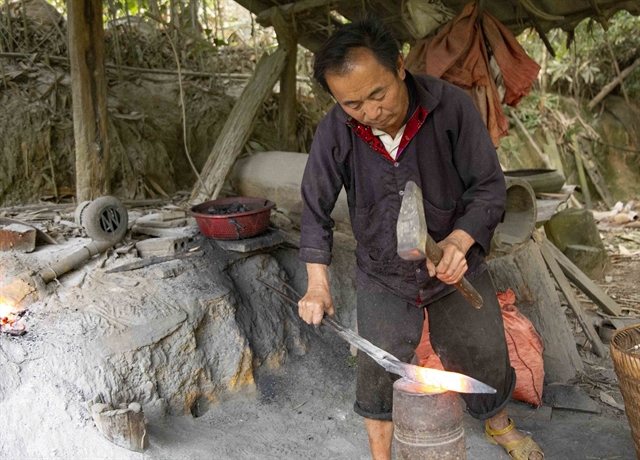 Life & Style
Life & Style

ĐIỆN BIÊN — The traditional blacksmith craft of the Mông ethnic minority people in Tủa Chùa District, Điện Biên Province, has been awarded the National Intangible Cultural Heritage Certificate.
Lò Văn Tiến, vice chairman of the People's Committee of Điện Biên, spoke during the award ceremony, affirming generations of the Mông blacksmiths' efforts in preserving the craft.
The Mông people have several handicrafts filled with national culture, with blacksmithing being one of the long-standing traditional crafts closely related to the people's farming and daily life.
The Mông have traditionally lived in remote highland areas. They are almost living a self-sufficient life; that is why they are skilled at everything, from forging knives, hoes, and shovels to manufacturing paper, incense, and clothing.
 |
| A Mông ethnic man forges a knife. — VNA/VNS Photo Xuân Tư |
Lots of household utensils are now available at communal and district markets, but many Mông blacksmiths still practise their ancient craft.
To create a product, the blacksmith must go through several stages, including cutting iron ingots into shape, heating, beating, tempering, and heating, beating again, and sharpening.
For the Mông people, the shape of the knife is not important, but its sharpness. To learn blacksmithing, the worker must be in good health and have keen hearing and sight.
It is essential to use the hands, strength, intuition, and, most importantly, one's eyesight. To produce a quality knife, the blacksmith must utilize skills that he or she has honed over time; there is no universal formula.
According to master artisans, the Mông people have a distinct approach to manufacturing high-quality traditional farm tools when tempering steel.
They temper steel using various methods. Some steel is tempered with water containing a moderate amount of salt, while others are tempered with banana stem water and can even be tempered with lubricating oil. The artisan must know how to examine the steel to decide how to temper it so that the knife remains sharp and durable.
Sand stones along streams are commonly used by the Mông smiths to sharpen their knives. Of course, not all stream stones are suitable for sharpening knives. This too is a technique for crafting a high-quality product.
Many Mông blacksmiths are still happy to do and preserve the traditional craft, because the demand for forged agricultural tools and household utensils remains high on the market. — VNS




